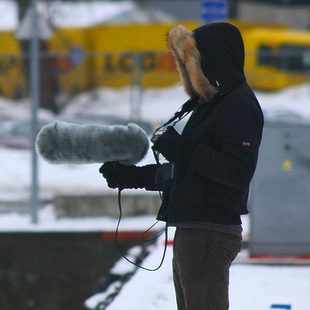KRYSTALLOS
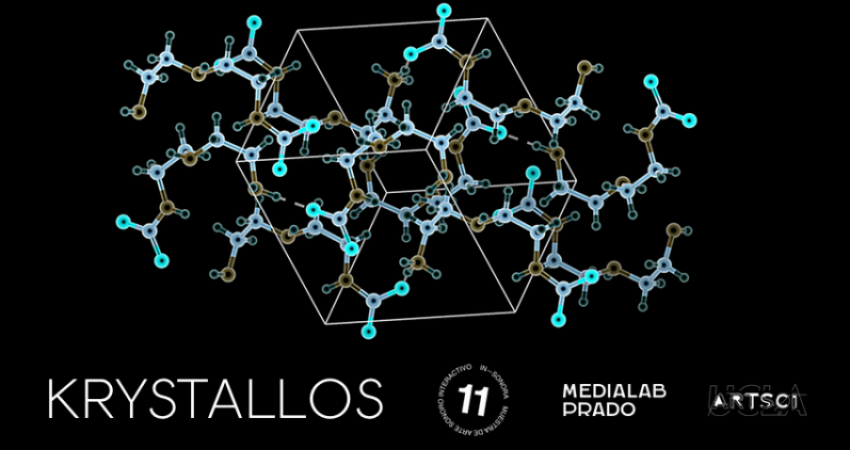
Krystallos emerges from a research about the nineteenth century´s scientific imaginary that is approached from a contemporary and experimental artistic point of view.
This work focuses on the studies carried out by authors such as Friedrich Reitnitzer, Otto Lehmann or Walter Hirt related to certain organic behaviors of liquid crystals.
The result is a multichannel visual and sound installation created using the visualization and sonification of data extracted from the structural characteristics of different liquid crystals samples attending to the multiple phases in which those can be found. The idea behind this work is to represent that which is invisible to the naked eye, to listen to inaudible phenomena and to animate what we perceive as inanimate.
Horacio González and Xoán-Xil López
https://in-sonora.org/
https://www.medialab-prado.es/
http://artsci.ucla.edu/
http://www.unruidosecreto.net/
https://www.vhplab.net/spip.php?article252
REFERENCES
Representation has been, and keeps being, an essential element not only for the dissemination of scientific discoveries but also for the processes involved on the conception of ideas and hypotheses and even for their formalization; “conceptualization and imaging shape scientific process ” (Wilson, Stephen: Information Arts. Intersections of Arts, Science and Technology. MIT Press. 2002, p. 76). Like any representation, the scientific one has an important aesthetic component associated.
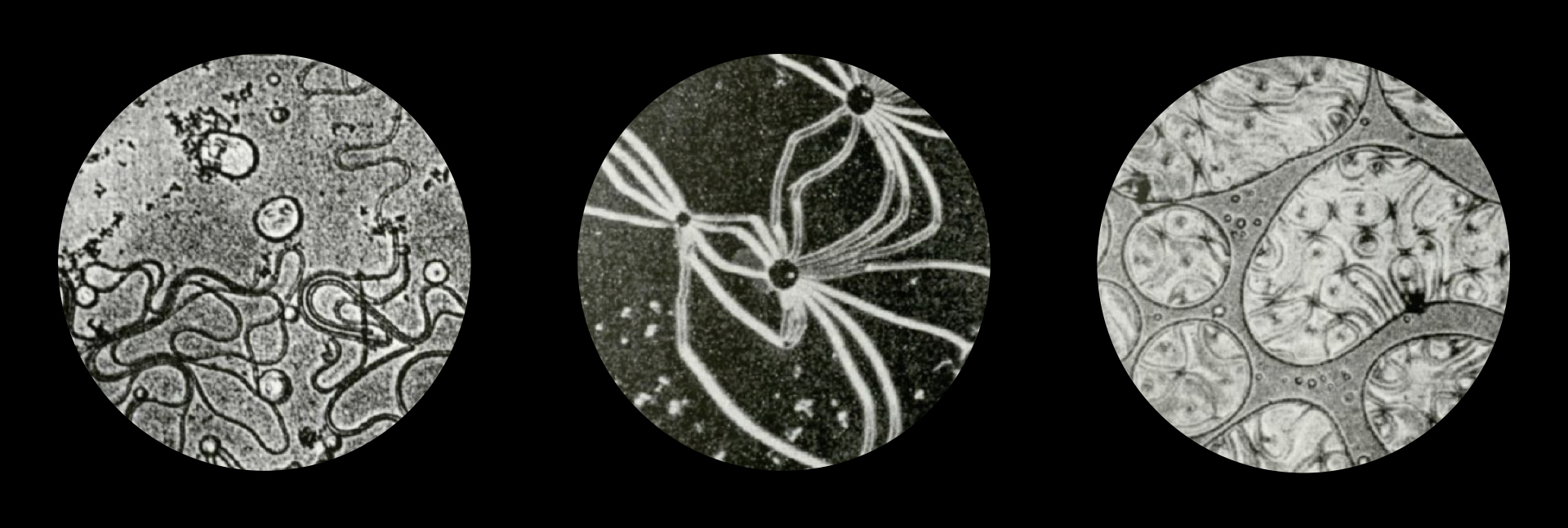
LIQUID CRYSTALS
In 1888 the Austrian botanist and chemist Friedrich Reinitzer discovered that under certain circumstances some crystals showed organic behaviors, which would lead Otto Lehmann to call them liquid crystals or rheocrystals.
The structures of these crystals challenged the geometric structures known so far "flowing and circular, producing ambient lights effects. They formed complex spider webs, or were filled with oil-like patches expanding in a mucus substance ” (Papapetros, Spyros: On the animation of inorganic. University Chicago Press. 2012, p. 121).
These characteristics led these researchers to project on them animal behaviors that Lehmann himself enhanced with the creation of a beautiful film in which he uses microscope images together with animation techniques.
This discovery inspires the latest works of his master Ernst Haeckel, Crystal Souls. Studies of Inorganic Life (1917), which came to support his own evolutionary theories as well as his monistic thinking. The discoveries related to liquid crystals have had a great importance in the visual culture of the 20th century; thanks to them it has been possible to develop the screens and displays that we use today in multiple devices and that are necessary to create and shape this installation.
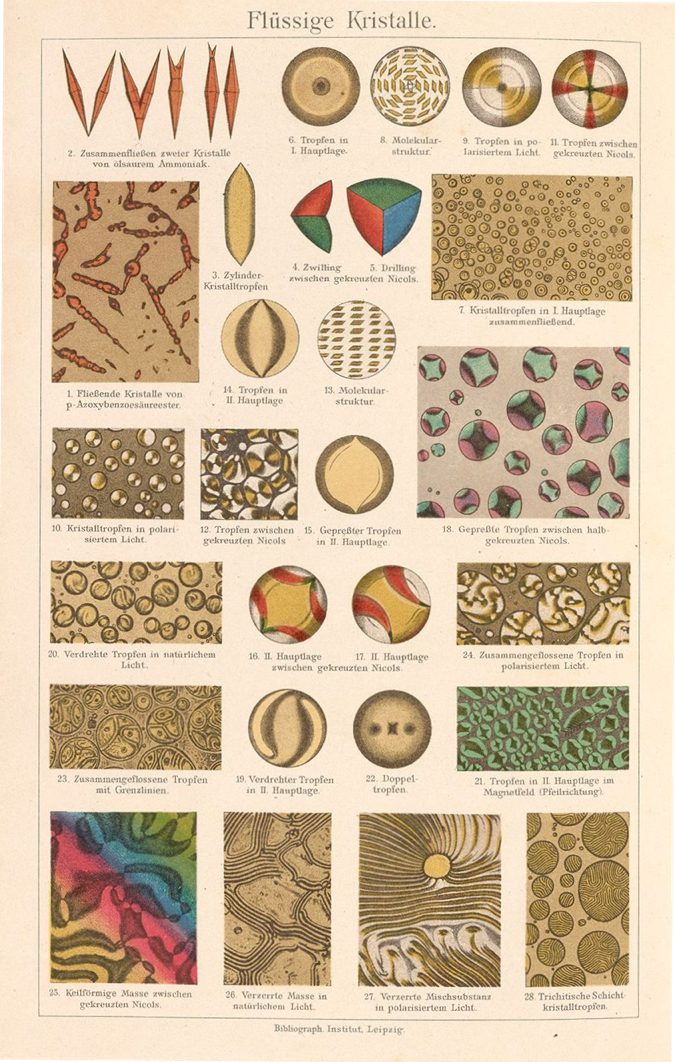
CABINETS OF WONDERS
These spaces that stood between the strange, the magical and the scientific, reflecting “a scholarly interest on the part of their owners in the potential of the anomalous and the marvellous to unlock ‘nature´s secrets’ " (Henning, Michelle: Museums, media and cultural theory. Open University Press. 2006, p. 21), serve here as inspiration for the layout of the modules in the form of displays that we can approach to perceive their individual peculiarities completing, at the same time, a whole and more immersive installation displayed in the space.
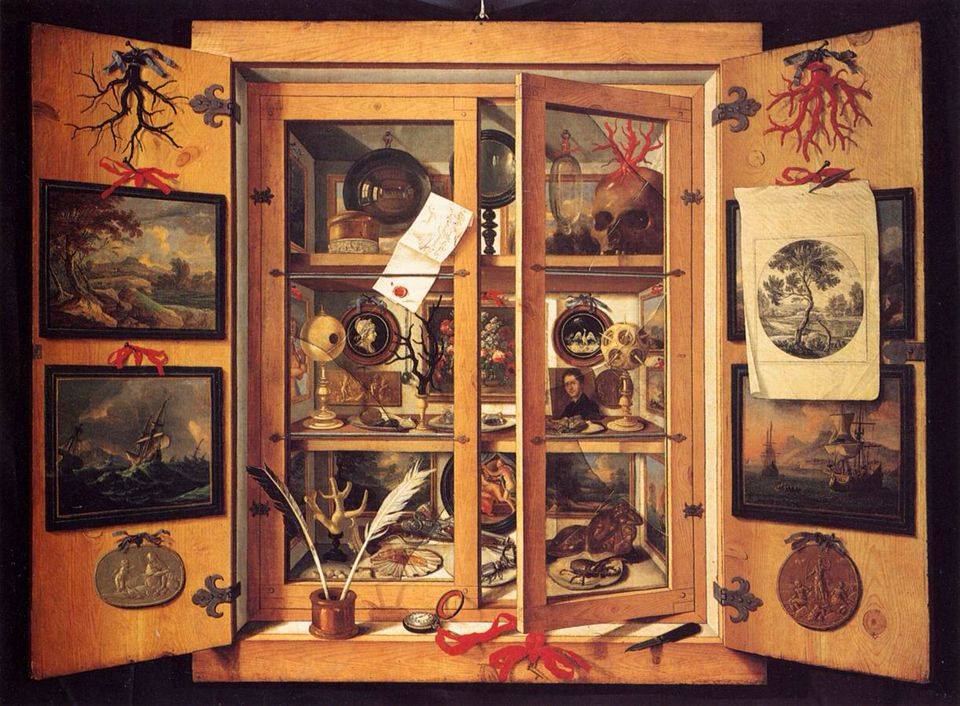
PEPPER GHOST
Another resource linked to the nineteenth-century visual culture that we recycle in this installation is the effect known as Pepper Ghost.
This device premiered at the Royal Polytechnic Institution in London in 1862 combining "popular topics, scientific education, and spectacle " (Kattelman, Beth A.: “Spectres and Spectators: The Poly-Technologies of the Pepper’s Ghost Illusion”. On: Reilly, Kara (Ed.): Theatre, Performance and Analogue Technology: Historical Interfaces and Intermedialities. Springer, 2013, p. 199) allows the reproduction of images with an holographic appearance. This type of optical systems puts us once again at the crossroads between art and technology connecting also with the cultural discourse that underlies the science of the late nineteenth century and its attempt to address metaphysical questions through science.
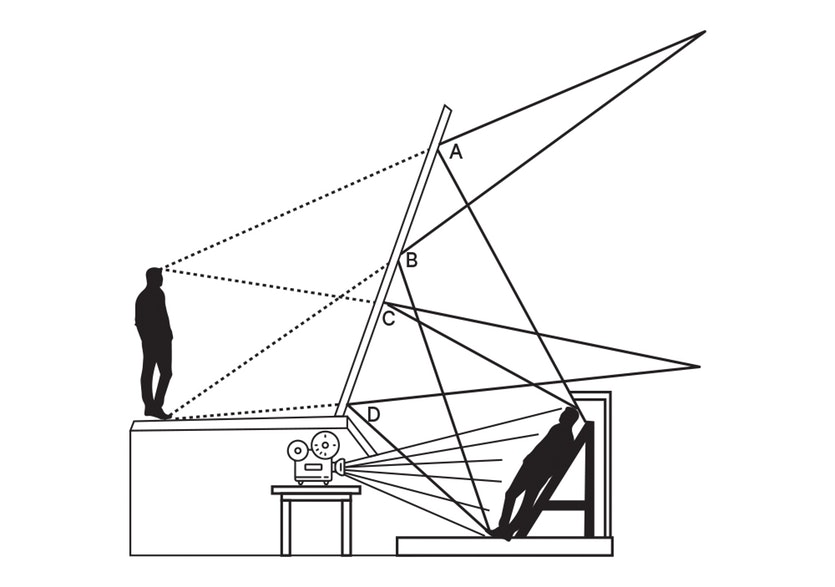
AUDIFICATION / SONIFICATION
The sonification not only helps the comprehension and analysis of data flows and complex patterns, which may otherwise to be unnoticed, but also opens a space for questioning the oculocentric regime of scientific culture, placing listening as a valid form for the elaboration of scientific knowledge.
Using sonification (data mapping into sound parameters) and audification (direct conversion of data into audio signals) processes has been widely used in recent years not only in the scientific field (Auditory display), but has also served to inspire works of multiple artists who use this data as an extramusical material that serves as a structural element that gives coherence to their works.
HOLOGRAPHY, MAPPING AND AUGMENTED REALITY
Despite current imaginary treats mapping and augmented reality like recent technologies, their principles have long been used by artists. Mapping, the adaptation of images to the projection surface in order to achieve hyperreal three-dimensional effects, is nothing more than an application of anamorphosis and perspective, widely studied during the Renaissance and the Baroque.
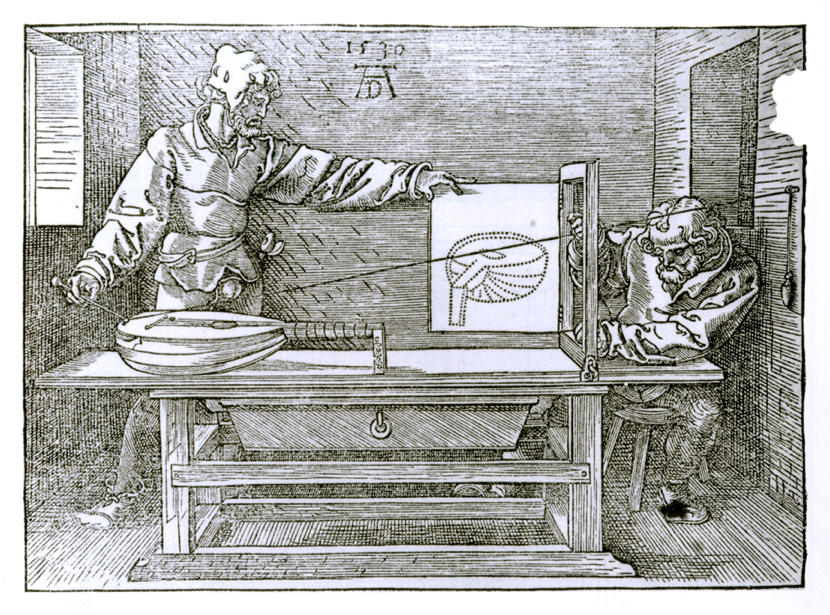
Paying attention to the detailed description made by Martin Kempt, in The science of ar (Kempt, Martin: The science of art. MIT Press. 2002, p. 16-29) of Brunelleschi's discovery of perspective, particularly to its demonstration at the Baptistery of Florence, we may realize something revealing. His authentic discovery has gone unnoticed for centuries, only now, in the age of computers, its possible to name what he really proposed.
Using tools as rudimentary as mirrors and diaphragms, Brunelleschi did not invent perspective, that had been widely anticipated on medieval optics treatises; Brunelleschi invented Augmented Reality.
What characterizes Brunelleschi's demonstration is not the ability to generate a systematized representation of reality, but the intention to coherently superimpose represented reality to reality itself. By using a mirror to reflect the clouds and forcing viewers to look through an eyehole that matched drawn perspective with the real buildings perspective, not only he must have caused an expectation similar to actual mapping projects in public spaces, but he successfully superimposed a virtual information plane, the picture, to reality. Integrating and complementing them, for the very first time, to produce a new experience.
Playing with technology and representation is something that artists have always done, KRYSTALLOS is a project that aims to do the same. Nevertheless, instead of taking advantage of holography, mapping and augmented reality from a monumental approach, KRYSTALLOS glances small or microscopic processes to work on a more intimate, personal and magical scale.
TECHNICAL DESCRIPTION
PRODUCTION
The installation consist of four modules using each one a screen, a reflective surface and a loudspeaker. Inside there is a three-dimensional model that represents a polygonal structure of the crystalline series using the Bravais lattices. On it the video mapping is projected using a Pepper ghost effect creating audible and visual structures from data.
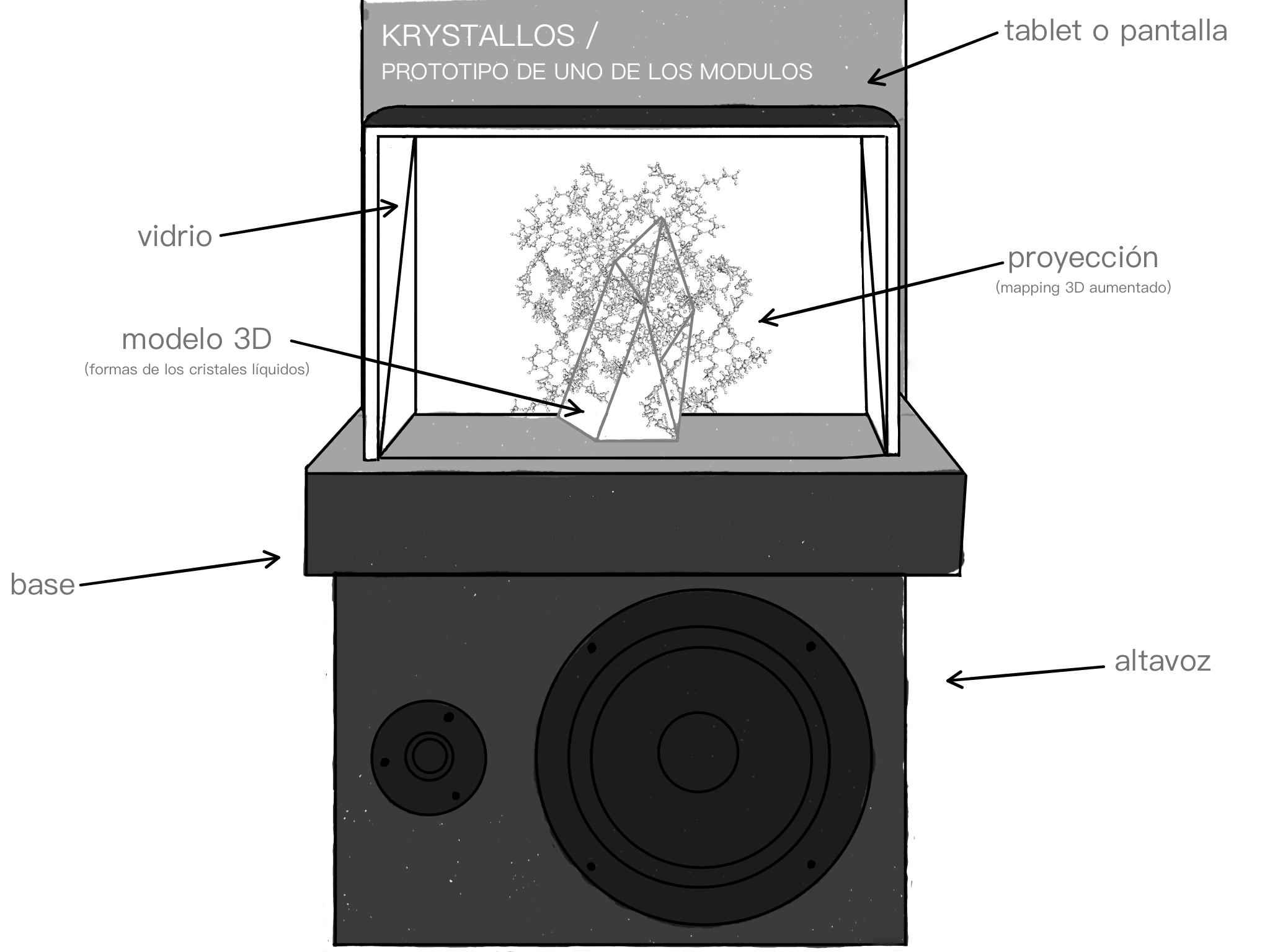
ARRANGEMENT
There are several ways to dispose the piece, but originally it is designed to be mounted on an array of shelves arranged frontally and at the same height on a wall. But modules location can be adapted to the different exhibition spaces depending on their configuration.
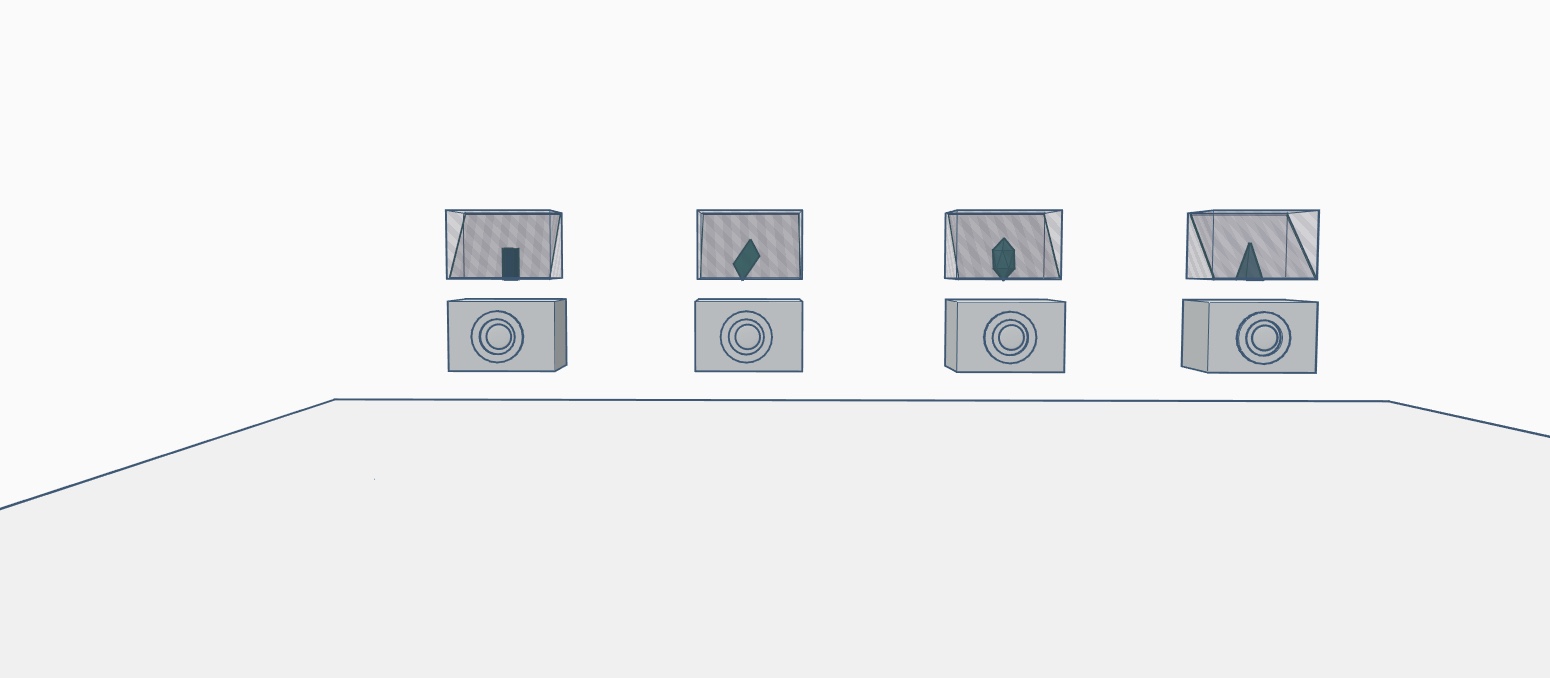
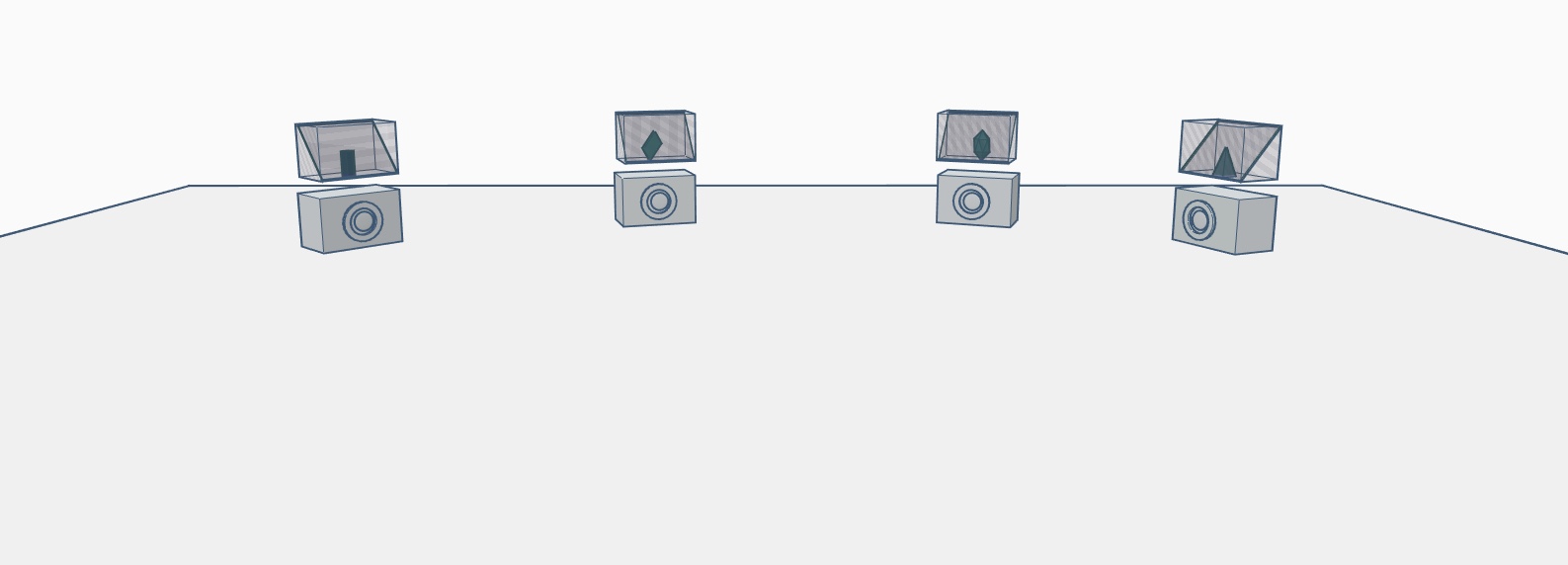

ELABORATION
Both the visual and sound creation are made using data extracted from the analysis of different types of liquid crystals, taking as reference the three-dimensional models of the crystalline series. Crystallography Open Database (http://www.crystallography.net/cod/) and VESTA software (http://jp-minerals.org/vesta/en/download.html) -Visualization for Electronic and Industrial Analisys- are used to extract and manage scientific data of the crystals as their Powder Diffraction Patterns.

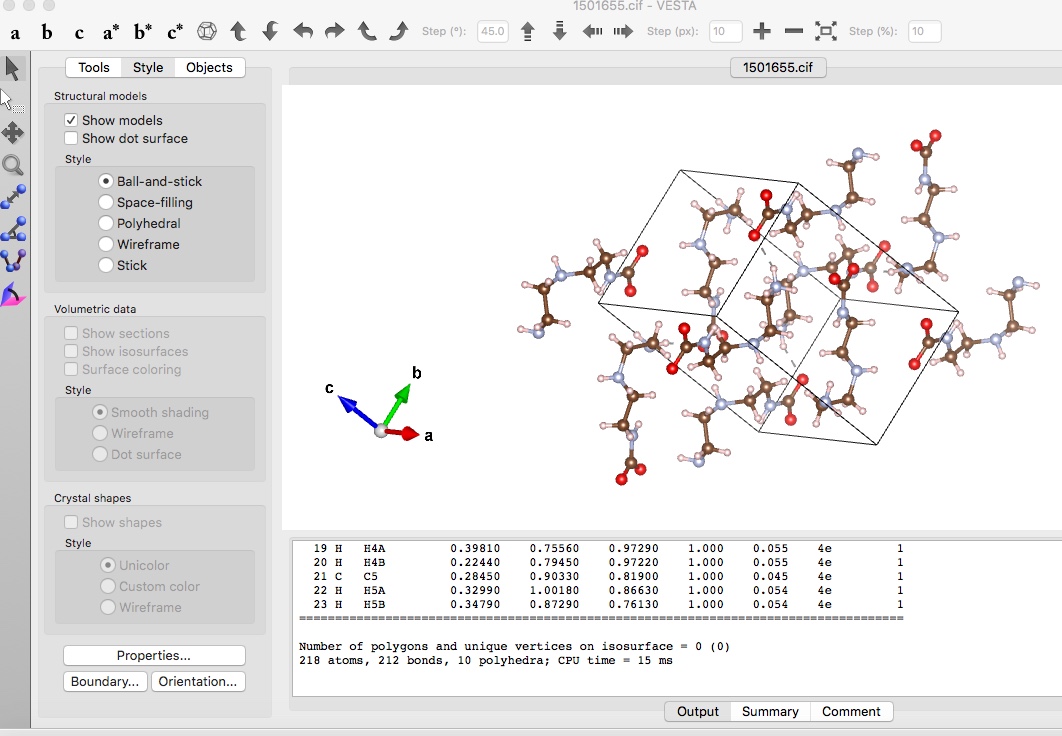
The data obtained from this process are used for the generation of images and sounds applying visual mapping processes on the small volumetric structures and generating sound using sonification and audification strategies.
For the development of sound content Supercollider software will be used.
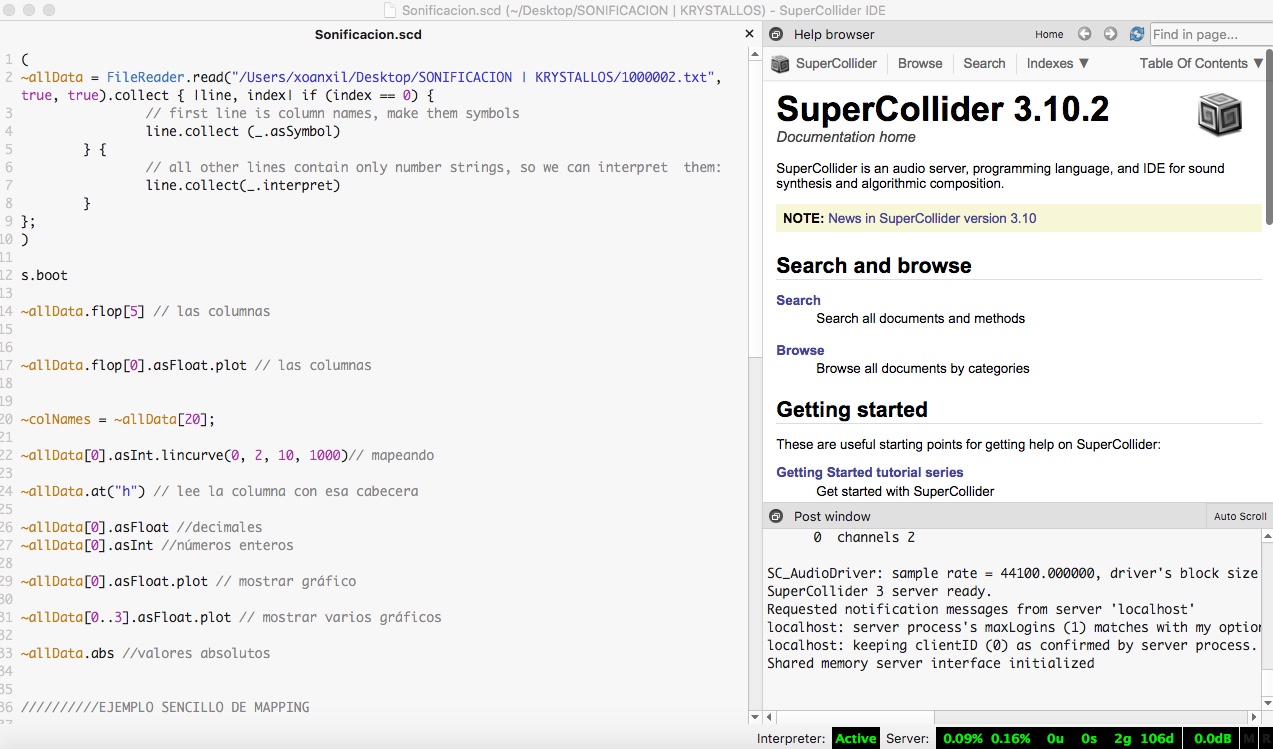
For the visual development of the piece (the image generation and its mapping on the three-dimensional paper crystal models) we will start working with SVG animations and browser based technology -https://svgjs.com/- for a fast prototyping approach that would allow us to experience the piece right from the beginning, in order to check all audiovisual interactions and to test how audience relates to the small holograms.
During this phase we will use Geogebra -https://www.geogebra.org/- to create sketches and to study the mathematic and geometric aspects of the projection system, build different setups an test them. After this initial phase, once we finalize a definitive audiovisual proposal for the installation.

Finally, we will create full screen applications for the tablets used as displays/projectors with OpenFrameworks - https://openframeworks.cc/ -. At the end of the project, all the software produced for the installation will be published under open source licenses.
Equipo
Coordinators:
Mediators:
Participants:
Timeline
Primer diseño y pruebas de montaje de uno de los módulos de proyección visual y sonora.
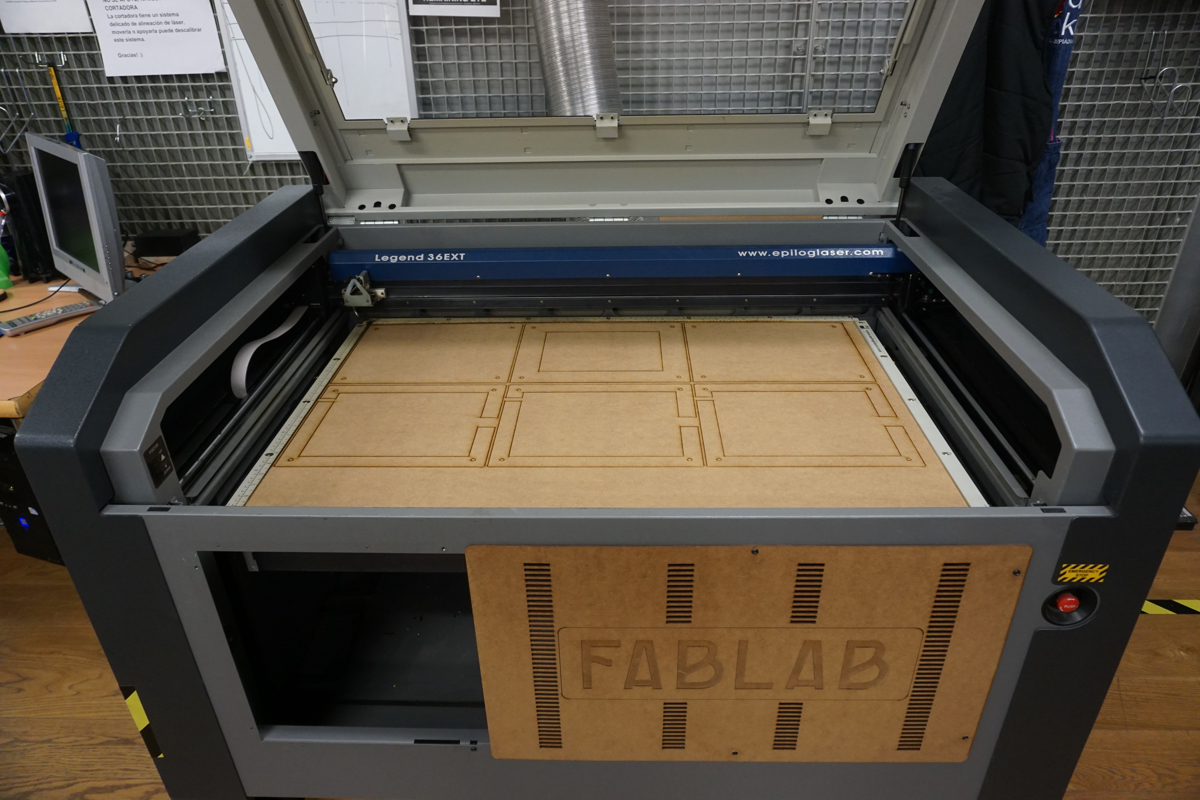
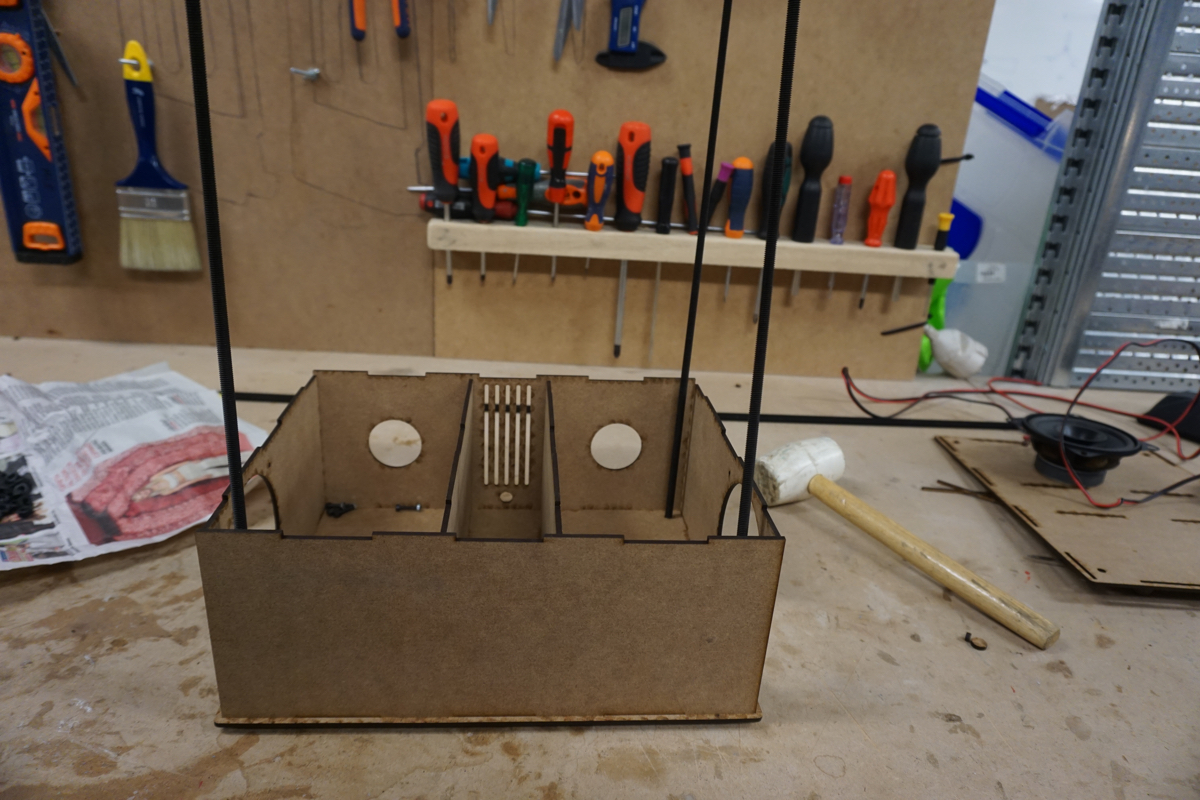
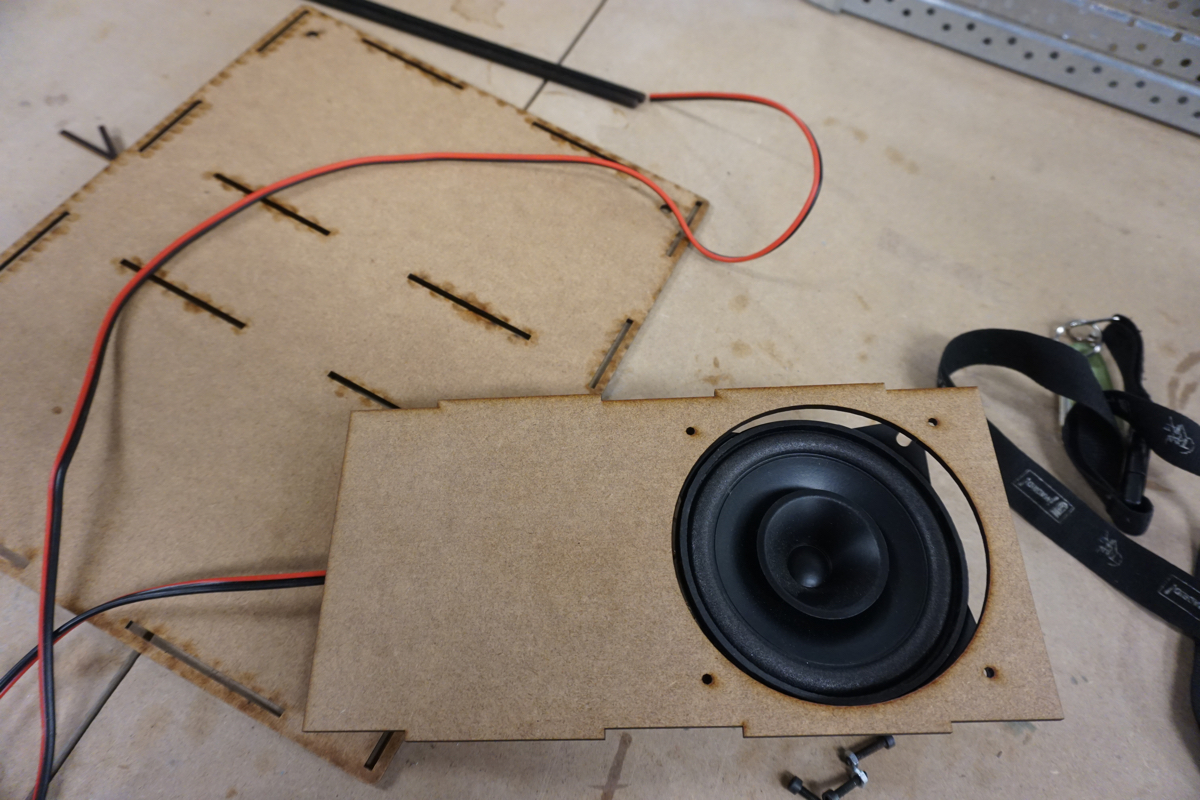
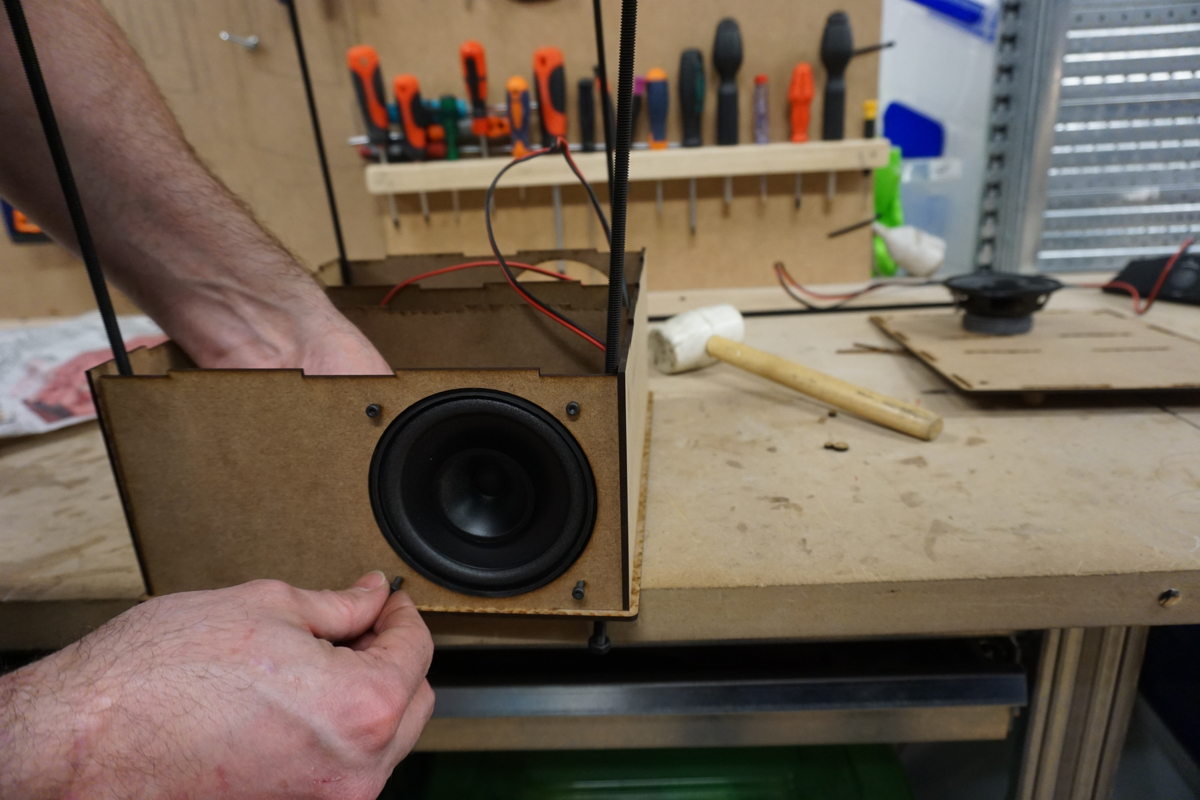
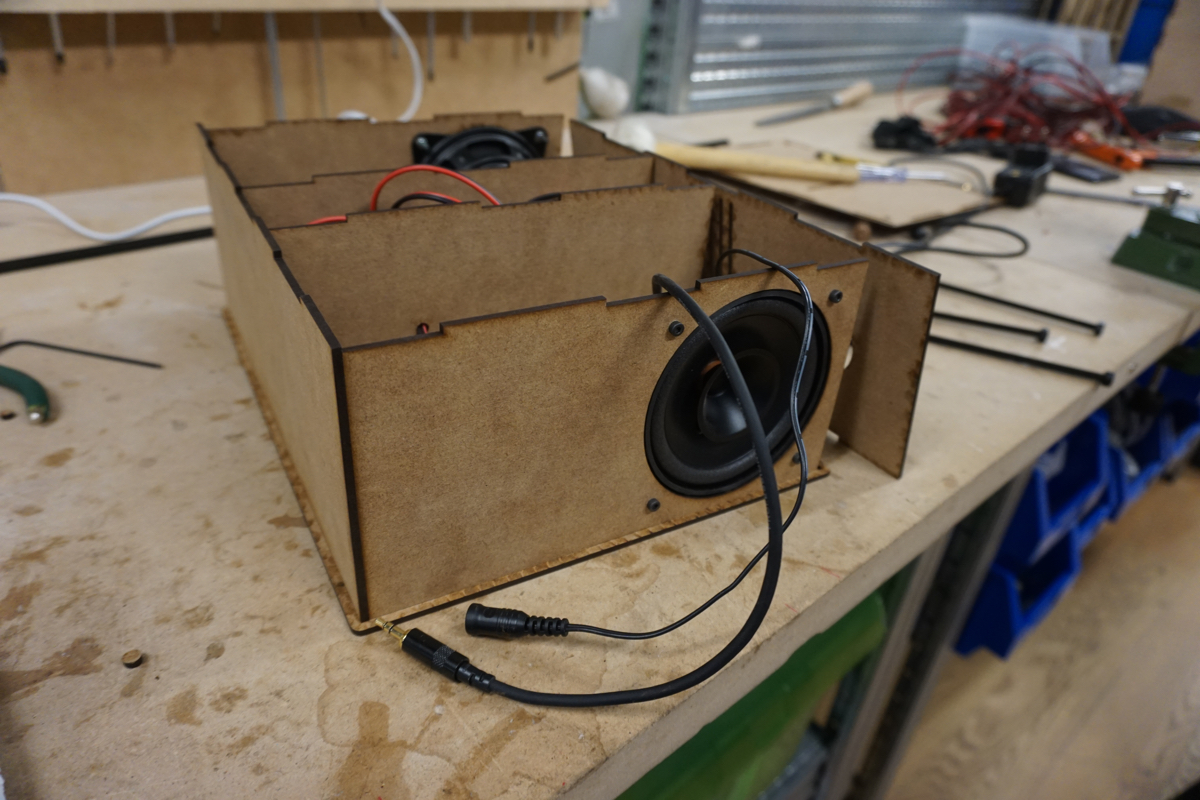
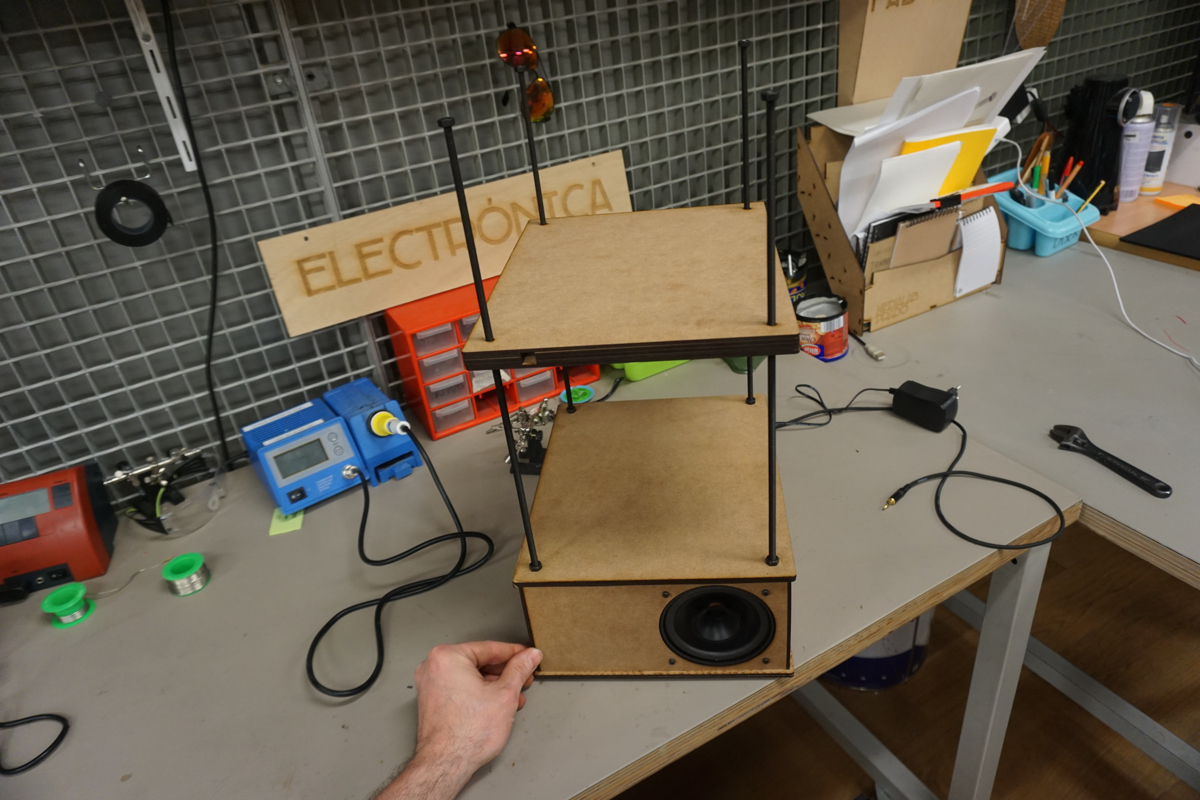
- Log in to post comments
En este MOOC dedicado a la composición algorítmica con Supercollider hay un vídeo sobre sonificación (semana 4 vídeo 3).
Si estais interesadas/os en empezar con supercollider los vídeos de Eli Fieldsteel son muy claros y progresivos.
- Log in to post comments
Un buen lugar por el que empezar a investigar sobre sonificación.
The Sonification Handbook
Edited by Thomas Hermann, Andy Hunt, John G. Neuhoff
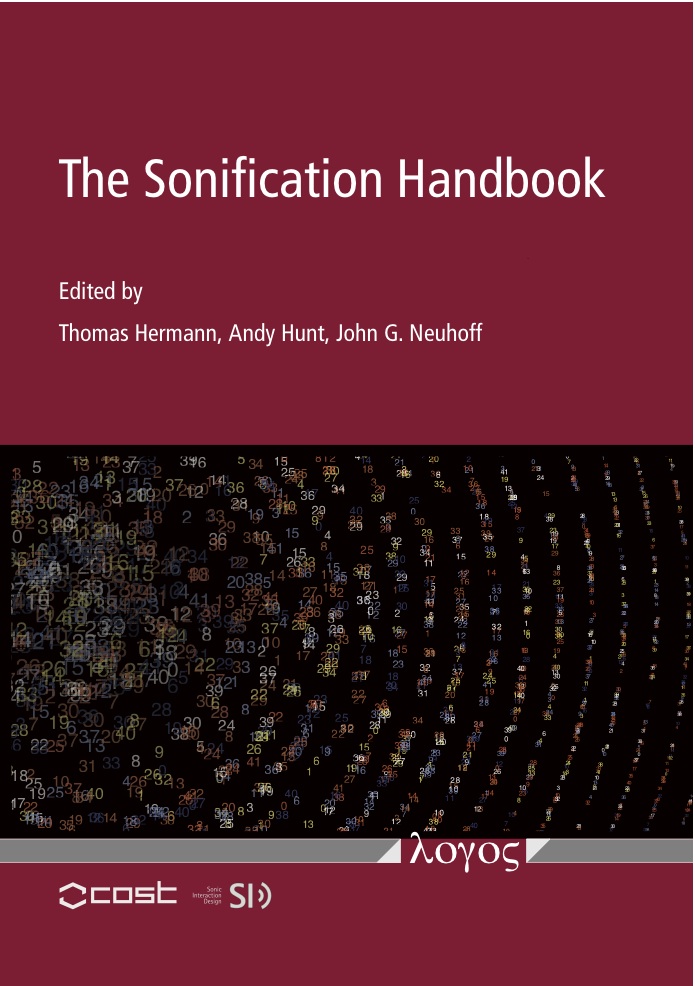
- Log in to post comments
Vídeos de Cristales líquidos realizados por el cristalógrafo Vance Williams utilizando un microscopio óptico polarizado.
Aquí puedes accecer a una playlist con más vídeos
- Log in to post comments



 Medialab-Matadero Madrid
Medialab-Matadero Madrid
